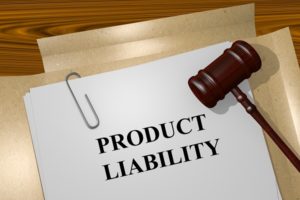
What is a Design Defect?
A design defect is a problem with a product’s design that makes a product inherently dangerous even if it is manufactured properly and with the best quality materials. If a product has a design defect, then all products of the same type have the same defect. An example of a product with a design defect would be a circular saw that was not designed with an appropriate safety shield.
How do You Prove a Design Defect?
A company’s liability for a design defect occurs when there is a foreseeable risk posed when the product is manufactured as intended and used as intended. To prove liability in a design defect case, a plaintiff must show:
- The product was not reasonably safe due to the substantial likelihood of harm;
- It was feasible for the manufacturer to design the product in a safer manner; and
- The defect was the cause of the plaintiff’s injury.
To show that it was feasible for the manufacturer to design the product in a safer manner, courts will weigh a number of different factors including:
- The usefulness of the product to the public as a whole and to the individual user
- The likelihood that the product will cause injury
- Whether there is a safer alternative design available
- The ability to make the product safer but still keep the product functional and reasonably priced
- The degree to which the user of the product was aware of its dangerousness
- The ability of the manufacturer to spread out the cost of the safer design
Strict Liability
When a product is defectively designed and causes injury when used for its intended purpose, the designer of the product can be liable for any injuries that result under the principle of strict liability. Under strict liability, the company is liable even if it was careful when designing the product. Someone trying to prove strict liability only has to show that the product was defectively designed and that the defect caused the injury. The reasoning behind strict liability is that the manufacturer is the party with the incentive and the opportunity to design products in a safe manner.
If you’ve been injured by a defective product, it is important to have an attorney evaluate your case as soon as possible. At Bonina & Bonina, P.C., we have over 50 years of experience helping injured New Yorkers in product liability claims. Contact us online or call us at 1-888-MED-LAW1 to schedule your free consultation. Home and hospital visits available. Se habla espaňol.
